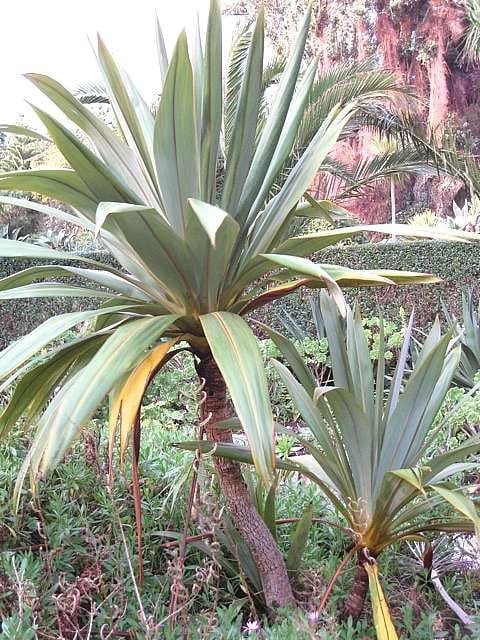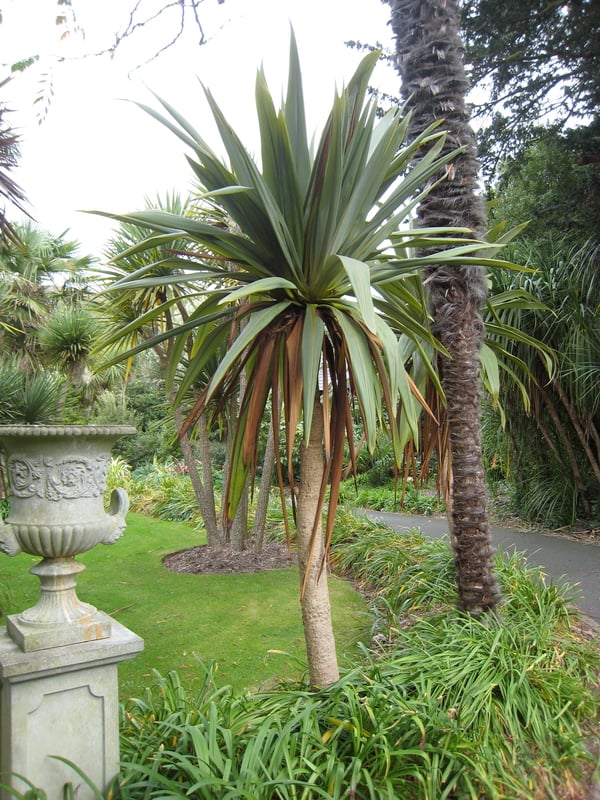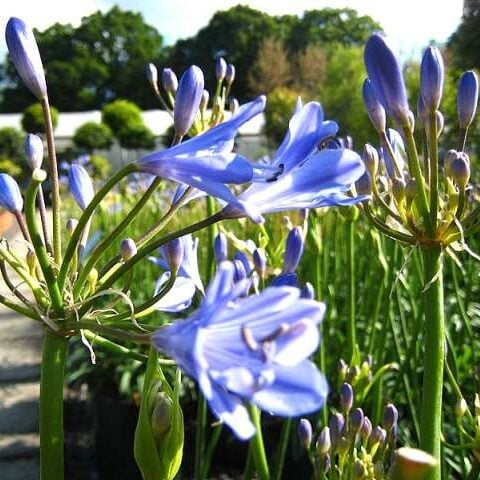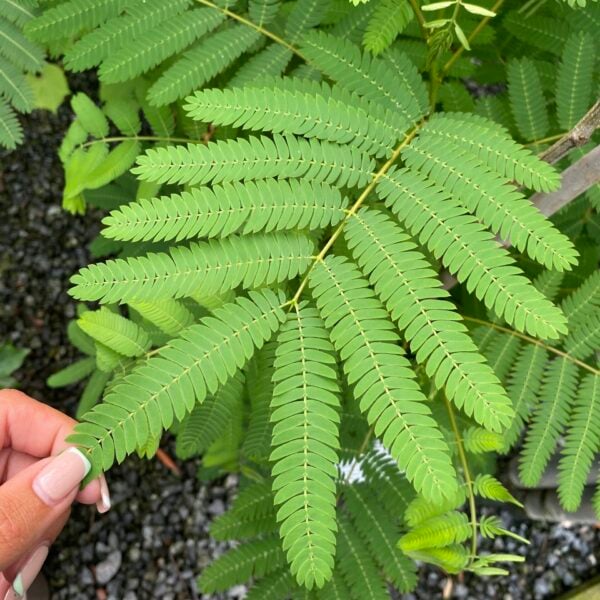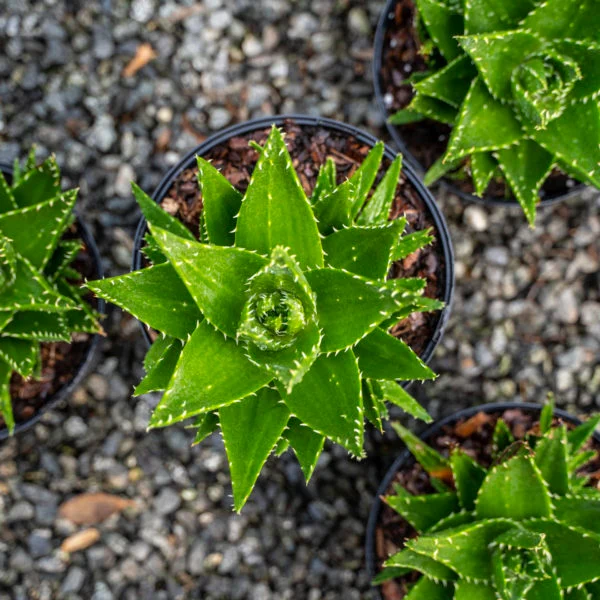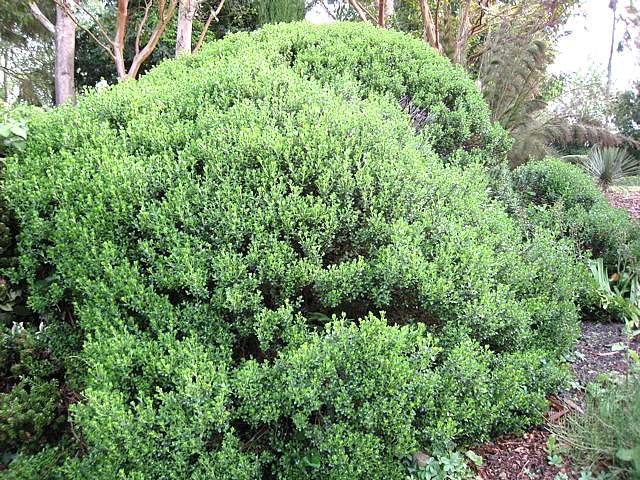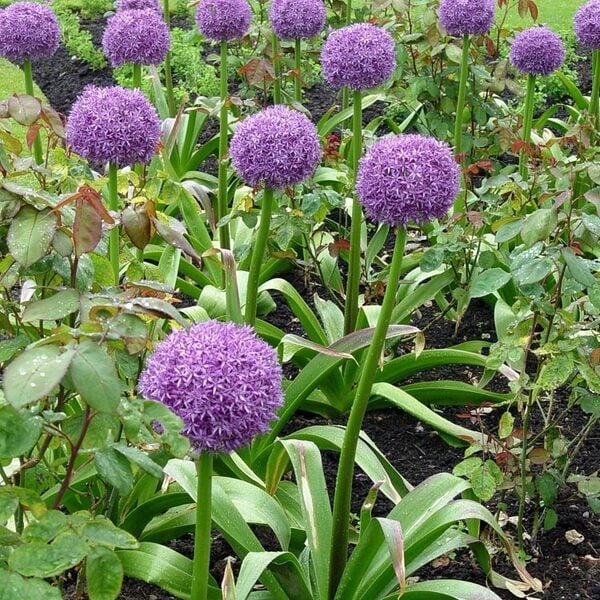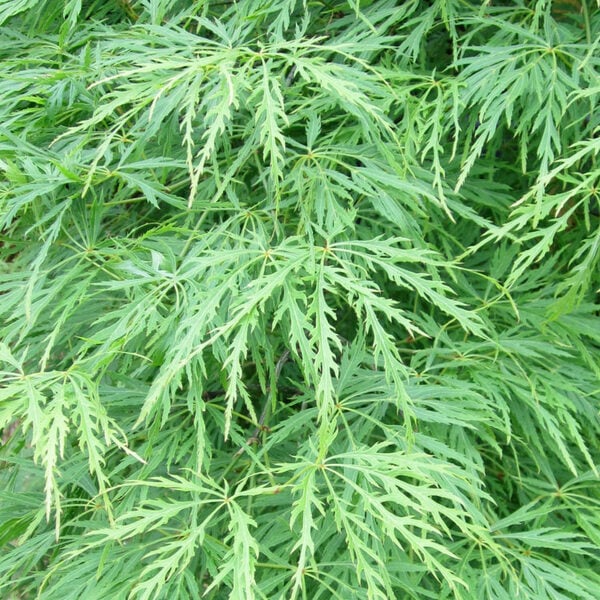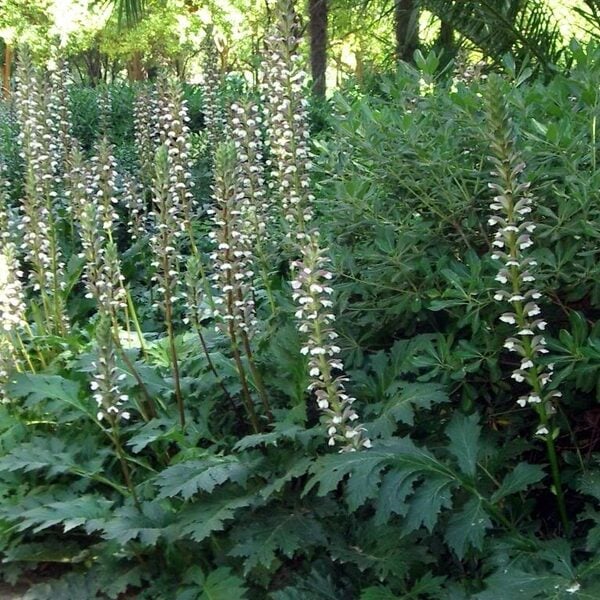Cordyline indivisa (Mountain Cabbage Tree)
All exoticists are in love with this plant. Its voluptuousness is matched only by its temperamentalness. Please contact us for stock availability and sizes.

Hardiness level Amber
A very beautiful and highly temperamental plant. In its native New Zealand, it grows high in the mountains on deep organic soil in forest clearings. It needs very well drained soil, but, with a constant source of water and plenty of light - yet protected from strong winds that can easily tear the leaves. They won't succeed in the shade. They seem to dislike growing in a pot and so need to be planted out when young. They are unlikely to survive being moved, once established in the ground. Despite their temperamentalness, they are able to withstand lower temperatures than the closely related and much easier Cordyline australis - although they cannot be considered reliably hardy in rural areas of southeast England without some protection in very hard winters. They will re-shoot from the base if clobbered by severe cold.
Their dislike of hot weather is demonstrated by the fact that they'll often grow more vigorously between October and March than between March and October. Feed with a top dressing of your favourite fertiliser once a year. We use 'Blood, Fish and Bone'. It should be noted that Cordyline indivisa can be variable, particularly in the width and the colour of its leaves. The best examples of this plant in the British Isles are at Castlewellan and Mount Stewart gardens, both on the east coast of Northern Ireland.There used to be a fantastic clump of them at Wakehurst Place in West Sussex but I notice they're there no more. Whether it was too hot for them or too cold (yes, it could be either), I don't know. They've survived in Ventnor Botanic Garden (Isle of Wight) and Tresco Abbey Garden (Isles of Scilly) for many years.
For information and ideas on winter protection go to 64. Wrapping for Winter in the Glossary of Terms
Sorry to sound so gloomy but it's important to be honest about plants prospects. In the case of this plant (probably the most temperamental plant I've ever encountered) how could we not grow it? Get it right and, by any standards, it's outrageously exotic.
N.B. When clipping several plants with the same tool, have a bucket containing a 5% bleach solution and swish your blades around for 30 seconds between plants to sterilise them. This will help avoid the chance of cross contamination of disease.
As with all woody plants, plant high, exposing as much of the taper at the base of the trunk as possible. Allowing soil to accumulate round the base of a tree can be fatal. Keep very well watered when first planted.
Additional Information |
|
|---|---|
| Soil Type | |
| Light | |
| Plant Type | Big Leaves / Exotics, Evergreen, Grown by Us, Palms, Screening Plants |
| Continent of Origin | |
| Specialist Plants | |
| Situation | Coastal, Conservatories, Mild City Gardens, Plants for Pots, Seaside, Sheltered Garden |
| Hardiness | |





